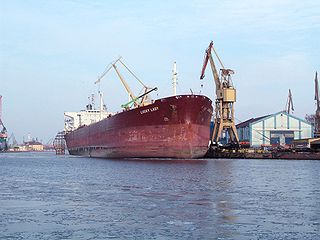Negligence is a failure to exercise appropriate and/or ethical ruled care expected to be exercised amongst specified circumstances. The area of tort law known as negligence involves harm caused by failing to act as a form of carelessness possibly with extenuating circumstances. The core concept of negligence is that people should exercise reasonable care in their actions, by taking account of the potential harm that they might foreseeably cause to other people or property.

Donoghue v Stevenson [1932] AC 562 was a landmark court decision in Scots delict law and English tort law by the House of Lords. It laid the foundation of the modern law of negligence in common law jurisdictions worldwide, as well as in Scotland, establishing general principles of the duty of care.

The doctrine of privity of contract is a common law principle which provides that a contract cannot confer rights or impose obligations upon anyone who is not a party to that contract. It is related to, but distinct from, the doctrine of consideration, according to which a promise is legally enforceable only if valid consideration has been provided for it, and a plaintiff is legally entitled to enforce such a promise only if they are a promisee from whom the consideration has moved.

Hedley Byrne & Co Ltd v Heller & Partners Ltd [1964] AC 465 is an English tort law case on economic loss in English tort law resulting from a negligent misstatement. Prior to the decision, the notion that a party may owe another a duty of care for statements made in reliance had been rejected, with the only remedy for such losses being in contract law. The House of Lords overruled the previous position, in recognising liability for pure economic loss not arising from a contractual relationship, applying to commercial negligence the principle of "assumption of responsibility".

In tort law, a duty of care is a legal obligation that is imposed on an individual, requiring adherence to a standard of reasonable care to avoid careless acts that could foreseeably harm others, and lead to claim in negligence. It is the first element that must be established to proceed with an action in negligence. The claimant must be able to show a duty of care imposed by law that the defendant has breached. In turn, breaching a duty may subject an individual to liability. The duty of care may be imposed by operation of law between individuals who have no current direct relationship but eventually become related in some manner, as defined by common law.

Caparo Industries PLC v Dickman[1990] UKHL 2 is a leading English tort law case on the test for a duty of care. The House of Lords, following the Court of Appeal, set out a "three-fold test". In order for a duty of care to arise in negligence:

Winterbottom v Wright (1842) 10 M&W 109 was an important case in English common law responsible for constraining the law's 19th-century stance on negligence.

Ex parte H.V. McKay, commonly referred to as the Harvester case, is a landmark Australian labour law decision of the Commonwealth Court of Conciliation and Arbitration. The case arose under the Excise Tariff Act 1906 which imposed an excise duty on goods manufactured in Australia, £6 in the case of a stripper harvester, however if a manufacturer paid "fair and reasonable" wages to its employees, it was excused from paying the excise duty. The Court therefore had to consider what was a "fair and reasonable" wage for the purpose of the act.
In English tort law, an individual may owe a duty of care to another, in order to ensure that they do not suffer any unreasonable harm or loss. If such a duty is found to be breached, a legal liability will be imposed upon the tortfeasor to compensate the victim for any losses they incur. The idea of individuals owing strangers a duty of care – where beforehand such duties were only found from contractual arrangements – developed at common law, throughout the 20th century. The doctrine was significantly developed in the case of Donoghue v Stevenson, where a woman succeeded in establishing a manufacturer of ginger beer owed her a duty of care, where it had been negligently produced. Following this, the duty concept has expanded into a coherent judicial test, which must be satisfied in order to claim in negligence.

Dennis Hotels Pty Ltd v Victoria, is a High Court of Australia case that deals with section 90 of the Australian Constitution, which prohibits States from levying customs or excise duties. Although some of the judges used the now-discredited criterion of liability approach, this case remains authority for cases that are factually similar to it.

R v Barger is a 1908 High Court of Australia case where the majority held that the taxation power could not be used by the Australian Parliament to indirectly regulate the working conditions of workers. In this case, an excise tariff was imposed on manufacturers, with an exemption being available for those who paid "fair and reasonable" wages to their employees.

Overseas Tankship (UK) Ltd v Morts Dock and Engineering Co Ltd, commonly known as Wagon Mound , is a landmark tort law case, which imposed a remoteness rule for causation in negligence. The Privy Council held that a party can be held liable only for loss that was reasonably foreseeable. Contributory negligence on the part of the dock owners was also relevant in the decision, and was essential to the outcome, although not central to this case's legal significance.

A contractual term is "any provision forming part of a contract". Each term gives rise to a contractual obligation, the breach of which may give rise to litigation. Not all terms are stated expressly and some terms carry less legal gravity as they are peripheral to the objectives of the contract.

Burnie Port Authority v General Jones Pty Ltd is a tort law case from the High Court of Australia, which decided it would abolish the rule in Rylands v Fletcher, and the ignis suus principle, incorporating them generally into the tort of negligence.

Candler v Crane, Christmas & Co [1951] 2 KB 164 is an English tort law case on negligent misstatement.

Parsons (Livestock) Ltd v Uttley Ingham & Co Ltd [1978] QB 791 is an English contract law case, concerning remoteness of damage. In it, the majority held that losses for breach of contract are recoverable if the type or kind of loss is a likely result of the breach of contract. Lord Denning MR, dissenting on the reasoning, held that a distinction should be drawn between losses for physical damage and economic losses.
George v Skivington (1869) is an English tort law case where it was held that a manufacturer who places a product intended for human consumption into the market, in a form that is liable for damage and who fails to exercise reasonable care to ensure that the product is suitable for human consumption, could be sued for damages by the victims.
Section 92 of the Constitution of Australia, as far as is still relevant today is:
... trade, commerce, and intercourse among the States, whether by means of internal carriage or ocean navigation, shall be absolutely free.
Section 90 of the Constitution of Australia prohibits the States from imposing customs duties and excise duties. The section bars the States from imposing any tax that would be considered to be of a customs or excise nature. While customs duties are easy to determine, the status of excise, as summarised in Ha v New South Wales, is that it consists of "taxes on the production, manufacture, sale or distribution of goods, whether of foreign or domestic origin." This effectively means that States are unable to impose sales taxes.

Australian Woollen Mills Pty Ltd v Commonwealth, is a leading Australian case regarding what is an offer that, when accepted, gives rise to a legally binding contract.










